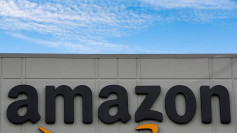Apple's next-generation iPad Pro, set to debut its groundbreaking M5 chip, won't reach mass production until the latter half of 2025, according to renowned industry analyst Ming-Chi Kuo. The delay marks a significant departure from Apple's usual update schedule and raises questions about its approach to rolling out new hardware.
Kuo disclosed in a Medium post that the M5 iPad Pro would be assembled primarily by China's BYD Electronics, a key Apple supplier. The same firm will also handle production for a new HomePod featuring a display, expected to arrive in the same year. While Apple has already placed orders for the M5 chips with Taiwan Semiconductor Manufacturing Company (TSMC), the delay reflects strategic choices to balance costs and technological advancements. Unlike prior speculation, the chip will utilize TSMC's 3-nanometer process rather than the more advanced 2-nanometer technology, likely due to financial considerations.
The current timeline suggests a late 2025 launch, creating an 18-month gap since the May 2024 release of the M4-powered iPad Pro. The longer interval deviates from Apple's typical cadence of annual updates and signals a possible recalibration of its product strategy. This extended timeline could align the iPad Pro more closely with the Mac product cycle, as both lines increasingly rely on Apple Silicon for performance enhancements.
Apple's decision to delay the iPad Pro refresh is notable given its history of leading Silicon upgrades with this device. The M4 iPad Pro broke tradition by debuting the M4 chip ahead of Macs, a move analysts believe could repeat with the M5 iteration. However, with no major design overhauls expected, the new model's primary draw will likely be its internal advancements rather than aesthetic changes.
Despite the delay, the M5 chip is expected to offer significant performance improvements, fueled by its advanced architecture and efficiency. This focus on internal upgrades could help Apple maintain its competitive edge in a tablet market that has seen slowing demand and lengthened upgrade cycles among consumers. However, the longer wait could also allow rivals like Samsung and Microsoft to further close the gap in the premium tablet segment.





